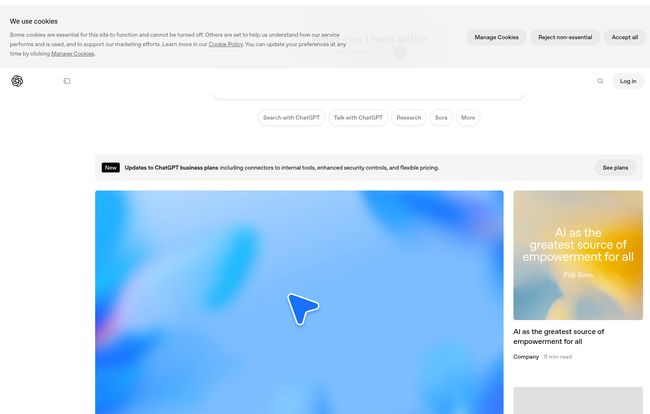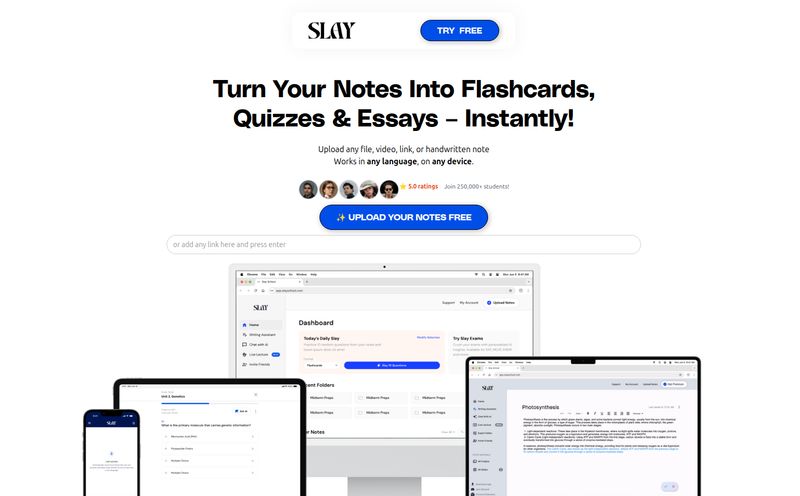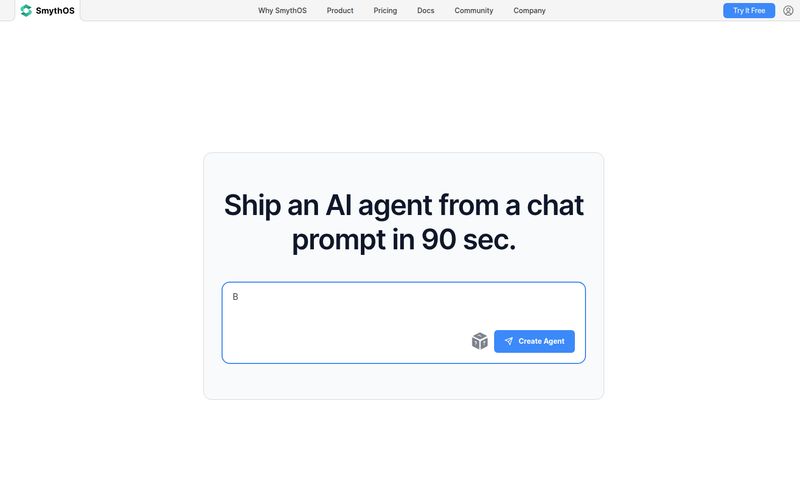For the past couple of years, you couldn't scroll through LinkedIn or attend a marketing conference without hearing the two magic words: ChatGPT. It landed like a meteor, changing everything from how we write blog posts to how my nephew does his homework (a story for another time). But here’s the thing I keep coming back to – we’re all so focused on the chatbot that we forget to ask the bigger question. What in the world is the company behind it, OpenAI?
Is it just a one-hit-wonder with a very, very clever parrot? Or is there something bigger going on behind those clean, minimalist landing pages? As someone who's spent years chasing traffic and trends, my gut tells me the story is much deeper. So, I did what any self-respecting SEO nerd does: I fell down the rabbit hole. And what I found is… well, it's a lot. And it's probably going to shape our industry for the next decade.
So, What Exactly is OpenAI?
At its core, OpenAI isn't just a software company. They call themselves an “AI research and deployment company.” Their stated mission is to build “safe and beneficial” Artificial General Intelligence, or AGI. That's the big one. The sci-fi dream. An AI that can reason, learn, and solve problems at a human level or beyond.
No small goal, right?
What’s fascinating to me is their weird corporate structure. It’s part non-profit, part for-profit. It feels like they're trying to be a super-powered research institution like the old Bell Labs, but with the market-moving speed of a Silicon Valley unicorn. It's an ambitious, maybe even contradictory, setup. They want to save humanity from rogue AI while also, you know, selling enterprise software plans. I have to respect the hustle, I guess.
Beyond the Chatbot: Exploring the OpenAI Toolkit
Okay, so they have this grand vision. But what are the actual tools in their belt? We all know the star player, but the bench is getting seriously deep.
ChatGPT, The AI We All Know and (Mostly) Love
I don't need to spend too much time here. We know it. It writes, it codes, it brainstorms, it translates. It's the Swiss Army knife that democratized large language models. But even here, they're not standing still. I saw a recent announcement on their site about a new “ChatGPT agent,” which sounds like it’s moving from a simple tool to a more autonomous assistant that can perform tasks for you. The implications for workflow automation are… staggering.

Visit OpenAI
Sora, Painting with Pixels and Prompts
This is the one that really gets my imagination going. Sora is their text-to-video model. You type in a description—say, “a golden retriever puppy exploring a futuristic city in the snow”—and it generates a scarily realistic video clip. The initial demos are mind-blowing. On one hand, this is a creative dream for marketers and filmmakers. On the other hand, it’s a terrifying can of worms for misinformation and the livelihoods of video professionals. It’s the classic double-edged sword of technology, and this one feels particularly sharp.
The API Platform, For the Coders and Tinkerers
For the non-developers out there, this is the most important and least-visible part of OpenAI. The API is the engine room. It’s how thousands of other apps and services are plugging OpenAI’s “brain” into their own products. That cool new AI feature in your favorite project management tool? It’s probably powered by the OpenAI API. This is their true Trojan horse for getting their tech into every corner of the digital world.
The Big Question: What's the Price Tag?
All this futuristic tech is great, but it ain't all free. While you can play around with a basic version of ChatGPT for free, the real power is behind a paywall. And honestly, that’s where things get interesting for businesses and professionals.
OpenAI’s pricing for ChatGPT is mostly built around a per-user, per-month model. It’s a classic SaaS approach. They have different tiers designed for different users, from individual power users to entire corporations. Here’s a simplified breakdown:
| Plan Type | Target Audience | General Pricing Model |
|---|---|---|
| Plus | Individuals & Power Users | Monthly subscription for faster responses and priority access to new features. |
| Pro | Advanced Individuals | A step up from Plus, with higher usage limits. |
| Team | Small to Medium Businesses | Priced per user/month, with options for annual billing. Includes collaboration features. |
| Enterprise | Large Corporations | Custom pricing for robust security, admin controls, and unlimited usage. |
The question for any business owner or marketing manager becomes: is the ROI there? For a solo content creator, the ChatGPT Plus subscription might be a no-brainer. For a large company, the Enterprise plan could replace entire workflows. You have to weigh the cost against the time saved and the capabilities gained. For more specific numbers, you really have to check out their official pricing page since they update things pretty frequently.
The Good, The Bad, and The AI-Powered Ugly
No tool is perfect, and one this powerful deserves a healthy dose of skepticism. I've been in this game long enough to see hype cycles come and go. So let's get into it.
On the one hand, the innovation is undeniable. OpenAI is consistently releasing models that push the entire industry forward. They’ve made these complex systems surprisingly user-friendly, which is a huge part of their success. And I have to give them credit for constantly talking about AI safety. A lot of companies wouldn’t bother.
However, there are real concerns. The paywalls mean the most powerful AI is reserved for those who can afford it. That has massive societal implications. And then there are the ethical nightmares. We've all seen examples of AI models producing biased or nonsensical results. The data they're trained on reflects the best and, frankly, the worst of the internet. Plus, the elephant in the room: job displacement. AI like this will absolutely change the job market, and we're not really prepared for that conversation yet.
In my opinion, OpenAI is doing what any ambitious tech company would do: building incredible things and figuring out the consequences as they go. It's both thrilling and a little terrifying.
My Take: Is OpenAI a Partner for Your Business?
So, should you be jumping on the OpenAI bandwagon? It depends. As a tool for brainstorming, content creation, and data analysis, it’s already proven its worth. If you run a marketing agency and you’re not using it for keyword clustering or writing ad copy variations, you're falling behind.
The “OpenAI for business” offerings show a clear path toward deeper integration. Think custom models trained on your own company data, or AI agents that can handle customer service inquiries. The potential is there. But it’s not a magic wand. You can’t just “add AI” and expect success. It requires a strategy, a deep understanding of the tool’s limitations, and a human eye to guide it. The best results I've seen come from a partnership between human creativity and machine efficiency. Don’t fire your writers; give them better tools.
At the end of the day, OpenAI is more than just ChatGPT. It’s a research powerhouse with a grand, slightly scary vision for the future. With their “NextDay 2025” event on the horizon, it’s clear they have no intention of slowing down. For now, I'm staying cautiously optimistic. I'll keep using the tools, keep an eye on the research, and keep reminding myself that this is all being built by imperfect people, just like us. And that's probably the most important thing to remember.
Frequently Asked Questions about OpenAI
- What is OpenAI's main goal?
- Their ultimate, stated goal is to build Artificial General Intelligence (AGI)—an AI system that is as smart as a human across the board—and to ensure it's developed safely and benefits all of humanity.
- Is ChatGPT the only thing OpenAI does?
- Not at all! While ChatGPT is their most famous product, they also have Sora (a text-to-video model), DALL-E (an image generator), a powerful API for developers, and they conduct fundamental AI research.
- Is OpenAI free to use?
- Yes and no. They operate on a freemium model. You can use a basic version of ChatGPT for free, but to access their more powerful models (like GPT-4), get faster responses, and use tools like Sora or advanced API features, you'll need a paid subscription or to pay for usage.
- What is Sora?
- Sora is one of OpenAI's newer and most exciting models. It's an AI that can generate high-definition video clips from simple text descriptions. It represents a major leap in creative AI capabilities.
- Why are people concerned about OpenAI?
- The concerns are multifaceted. They include ethical issues like inherent bias in AI models, the potential for misuse (like creating deepfakes or misinformation), and the significant economic impact of job displacement as AI automates more tasks.
- Can developers and businesses use OpenAI's technology?
- Absolutely. OpenAI offers a comprehensive API that allows developers to integrate models like GPT-4 into their own applications and services. They also have specific business and enterprise plans for companies that want to use their technology at scale.



